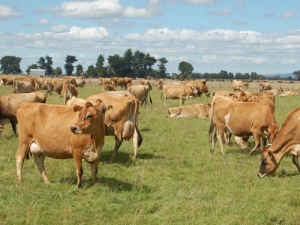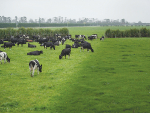Working as a veterinarian pregnancy testing dairy herds helped shape the thinking of Australian farmer Tim Humphris when he and his wife Lyndal decided to go farming.
“I saw too many empty cows. Declining fertility in the dairy industry was always going to be an issue I wanted to address,” Humphris said.
A three way cross breeding program to boost hybrid vigour has been the cornerstone of their farming enterprise at Tongala in northern Victoria since they entered the industry seven years ago.
“Mixing Friesian, Jersey and Aussie Red bloodlines has given us a motley-looking herd, but we are getting outcomes in fertility and cow health,” Humphris says.
He keeps careful pedigree records and aims to keep continually out crossing their 330 milkers.
Cows that are predominantly Friesian are mated with Jersey semen, Jerseys get a red sire and Aussie Reds are crossed with a Friesian.
The couple maintain about 30 registered Aussie Reds as a contribution to building genetic diversity in the small breed. This year they have had one of their bulls selected as an AI sire by Genetics Australia.
“I’ve always had a strong interest in breeding, especially in selecting bulls,” said Humphris.
The breed had opened up its register to quality red bloodlines from Scandinavia to help broaden its genetic base.
While there were a number of Aussie Red herds in Australia, semen sales were overwhelmingly used for crossbreeding. For this reason the breed restricted the percentage of Friesian blood to help farmers maximise hybrid vigour when using Aussie Red semen.
When making breeding decisions on his farm, Humphris says he gave priority to health and fertility traits over production.


















